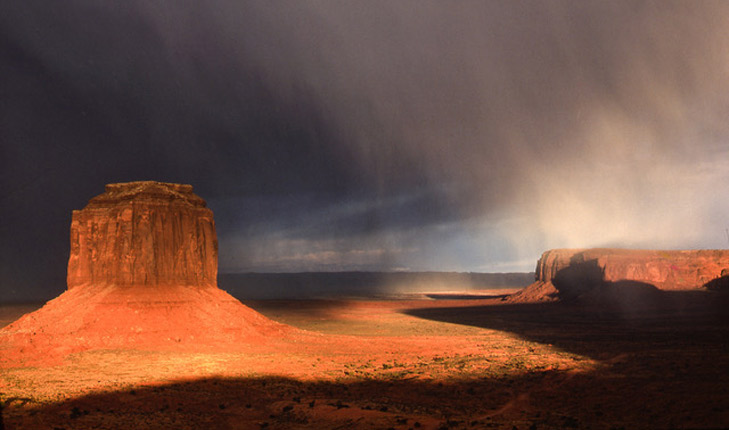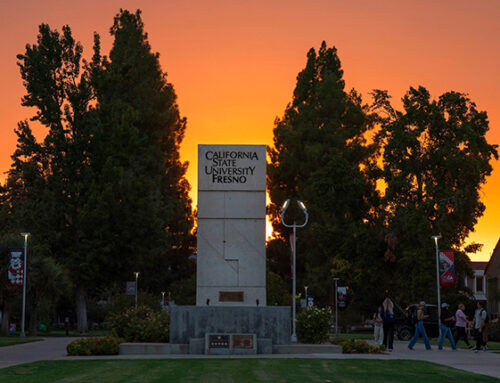As Namer, a previously stray dog, ran through the wooded river bottom near Centerville, a youthful Steve Dzerigian ran behind holding onto the leash. At some point during his daily chore of walking the dog, he decided the human-dog roles should be reversed and he let the dog run free. While the leash was still attached, he never let it tighten — running as Namer ran and observing her tracking techniques.
“Namer had a gentle approach to everything but pursued unequivocally that which captured her attention,” said Dzerigian, a longtime photographer and educator, in his recently published book. “Thirty years later in my series, ‘Connections with Nature,’ I’m tracking and sensing my subjects much as she would.”
In his book “Trail of Stones: My Path in Photography,” published by The Press at California State University, Fresno, Dzerigian exhibits a lifetime of stunning images while observing his influences and chronicling the creative process of his work.
“‘Trail of Stones” shares Steve Dzerigian’s decades of pedagogical wisdom with readers of all ages who will be very impressed by the quality of his compositions and ideas as well as the production values of the book itself. Steve has created not only a learning tool but also an inspirational text for anyone who loves the great outdoors,” said Dr. Honora Chapman, interim dean of the College of Arts and Humanities at Fresno State.
The community is invited to view full-size prints featured in the book at an exhibition during library hours from Aug. 26 through Sept. 20 in the Leon S. Peters Ellipse Gallery at the Henry Madden Library at Fresno State.
Dzerigian will give an artist talk and PowerPoint presentation at 5 p.m. Wednesday, Sept. 4, at the Henry Madden Library (Room 2206). A reception and book signing will follow at 6 p.m. at the Leon S. Peters Ellipse Gallery.
“When we can bring everyone together for such a peaceful and joyful experience, it helps us all see the beauty of being at Fresno State and living in Fresno, a place that nurtures all types of artists,” Chapman said.
Beginning with early life influences, such as following his dog, Dzerigian delves into the physical nature of creating art. The lugging of equipment, laying on his back on a dirty stone floor, the thought process before plunging the release cable, the darkroom procedure, manual coloring with pencils and other necessary exertions in his artistic pursuit. He demonstrates the use of that physical process to will himself to slow down and be mindful of his surroundings — to engage with his subject on an almost spiritual level in order to pinpoint the source of inspiration.
Like Namer tracking an object of attention, Dzerigian encourages a methodical pursuit combined with awareness during the conception of art — being open to the unexpected. He encourages artists to study their setting with all of their senses — to find the essence of the attraction and bring that discovery to the public.
“Many photographers have pursued the pre-visualization tradition, visualizing something before clicking the shutter then carefully crafting the image to match what they had in their mind’s eye. This model almost never worked well for me. Instead, I track images much as a dog or a scout would follow telltale signs. I don’t hold on firmly to what I think an image or place should look like. If I detect something that excites me or seems to mean something special, then I move quickly to photograph, or at least move around it, study it or rest there to take it all in. Eventually, a connection and a picture may be made,” Dzerigian said.
He believes the book can also be used as a tool to better understand the process of creation and to provide support for other artists.
“I describe several blocks to creative thinking and ways to surmount them. Applicable to both the analog and digital processes, various photographic techniques are presented and illustrated. Interrelating the text and images offers a kind of instructional dialog that I explored through my extensive classroom and field experience,” Dzerigian said. “Above all, my intent is that the book brings attention to how we may approach ‘seeing’ aesthetically and philosophically in order to nurture the spirit of living, as well as, to effectively share with or inform the public through our observations and discoveries.”
While following his path in photography, Dzerigian has made a living as an educator. He was an instructor at Fresno City College for 29 years and a workshop instructor through the University of California, Santa Cruz Extension for 30 years. He also served six years as an active staff member and one year as director of The Ansel Adams Gallery Workshop.
Devoted to facilitating art and education in Central California, Dzerigian has served as curator, juror and consultant for many exhibitions, competitions and media events. In 1980, he expanded the idea of a photography gallery in Fresno by gathering together charter members to create Spectrum Art Gallery, a non-profit, cooperative still providing valuable services to the community. He also was a founding member of Corridor 2122, an interdisciplinary art studio and gallery, started in 2004.
The exhibition, artist talk and reception are free and open the public. Parking is $5 Monday through Friday, free after 4 p.m. on Friday and Saturday and Sunday, in lots P27 and P20. For more information or physical accommodations, contact the Library Administration Office at 559.278.2403 or libraryevents@mail.fresnostate.edu





